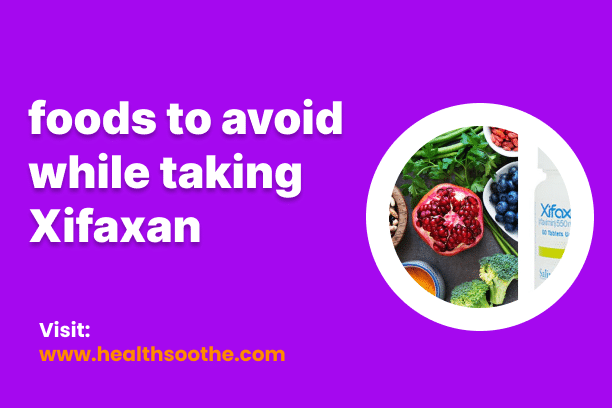Xifaxan, an FDA-approved prescription medication produced by Salix Pharmaceuticals, serves as a treatment option for several medical conditions, including:
- Irritable bowel syndrome with diarrhea (IBS-D) in adults.
- Traveler’s diarrhea caused by Escherichia coli (E. coli) in adults and children aged 12 and above.
- Hepatic encephalopathy, aiming to inhibit the growth of bacteria that produce toxins and could exacerbate liver disease, consequently reducing the risk of cognitive decline in adults with liver failure.
The active component in Xifaxan is rifaximin, belonging to the class of antibiotics (antibacterial medications) designed to combat bacteria in the intestines. Available in tablet form for oral consumption, it can be taken with or without food.
Adherence to the prescribed dosing regimen is crucial for Xifaxan treatment. Missing doses not only diminishes the antibiotic's effectiveness but also heightens the risk of bacteria developing resistance to the drug. In the event of a missed dose, it should be taken as soon as remembered. However, doubling up on doses is not advised. If the next dose is approaching, it's recommended to skip the missed one.
Additionally, Xifaxan may be utilized to alleviate bloating associated with health conditions like small intestinal bacterial overgrowth (SIBO). Unlike the large intestine, which harbors most gut bacteria, the small intestine typically contains minimal bacterial populations.
What are the most common side effects of Xifaxan?
The primary side effects observed in clinical trials of Xifaxan for the treatment of IBS-D include nausea and elevated liver enzymes, while constipation occurred in approximately 0.5% of individuals using Xifaxan.
Furthermore, common side effects associated with Xarelto comprise swelling in the extremities, dizziness, headaches, fatigue, and abnormal liver function tests.
Although rare, Xifaxan may lead to a severe intestinal condition known as Clostridium difficile-associated diarrhea, triggered by resistant bacteria strains.
Given the nature of antibiotics like Xifaxan, there exists a possibility of experiencing diarrhea due to bacterial overgrowth, manifesting in symptoms ranging from mild diarrhea to severe colitis.
Should you encounter frequent watery diarrhea, accompanied by cramping, severe abdominal pain, rapid heart rate, fever, nausea, or blood in stool, it is imperative to promptly contact your healthcare provider.
In the event of experiencing any of these side effects or encountering an allergic reaction while using Xifaxan, it is essential to promptly inform your healthcare provider or seek immediate medical attention.
Read Also: Tattoos - Numbing Creams & Aftercare
Pros and Cons of xifaxan
Pros:
- Effectiveness
- Well-Tolerated
- Oral Administration
Cons:
- Cost
- Limited Indications
- Side Effects
Differences Between xifaxan and cimetidine
Xifaxan (Rifaximin):
It is an antibiotic that works by inhibiting the growth of certain bacteria in the intestines. Xifaxan is commonly used to treat conditions such as irritable bowel syndrome with diarrhea (IBS-D), traveler’s diarrhea caused by Escherichia coli (E. coli), and hepatic encephalopathy.
Cimetidine:
It belongs to a class of medications known as H2 blockers. Cimetidine works by reducing the production of stomach acid by blocking histamine receptors in the stomach. It is primarily used to treat conditions such as gastroesophageal reflux disease (GERD), ulcers, and heartburn.
Alternative to xifaxan
Antibiotics:
Other antibiotics may be prescribed as alternatives to Xifaxan for treating bacterial overgrowth or infections in the gastrointestinal tract. Examples include metronidazole (Flagyl) and neomycin.
What foods should I avoid while on Xifaxan?
While there are no specific foods strictly prohibited while undergoing Xifaxan treatment, individuals with IBS are typically advised to steer clear of the following:
- Insoluble fiber-rich foods like whole grains, certain vegetables, and fruits such as apples, cherries, pears, and peaches.
- Gluten-containing items like rye, wheat, and barley.
- Dairy products including milk, yogurt, and ice cream.
- Fried foods.
- Legumes and beans.
- Caffeinated beverages like coffee, sodas, and energy drinks.
- Processed foods like chips, pre-made frozen meals, deep-fried foods, and processed meats.
- Sugar-free sweeteners commonly found in sugarless candy, gum, mouthwash, and diet drinks.
- Wheat-based products such as cereal, bread, and crackers.
- Chocolate.
- Alcohol.
- Garlic and onions.
- Cruciferous vegetables like broccoli and cauliflower.
Similarly, individuals with traveler’s diarrhea are typically advised to avoid:
- Unpeeled or unwashed fruits and vegetables.
- Raw leafy vegetables such as lettuce, spinach, and cabbage.
- Raw or undercooked meats.
- Uncooked or undercooked shellfish.
For personalized guidance on dietary choices while using Xifaxan, it's advisable to consult a healthcare professional or a dietitian who can help tailor a suitable diet plan based on individual needs and medical considerations.
What are the best foods to eat with Xifaxan?






